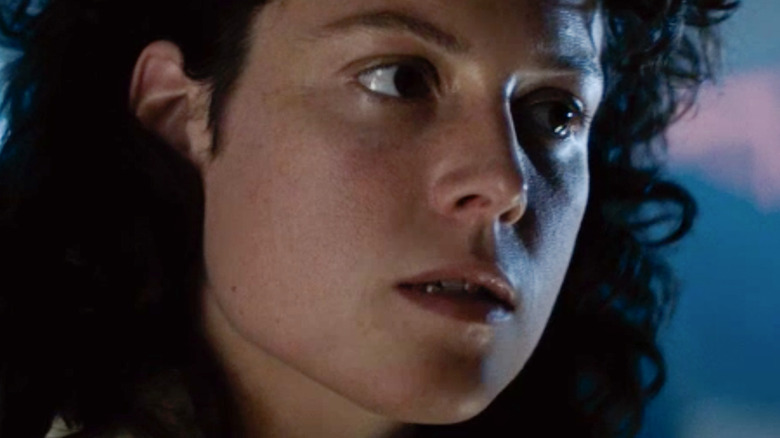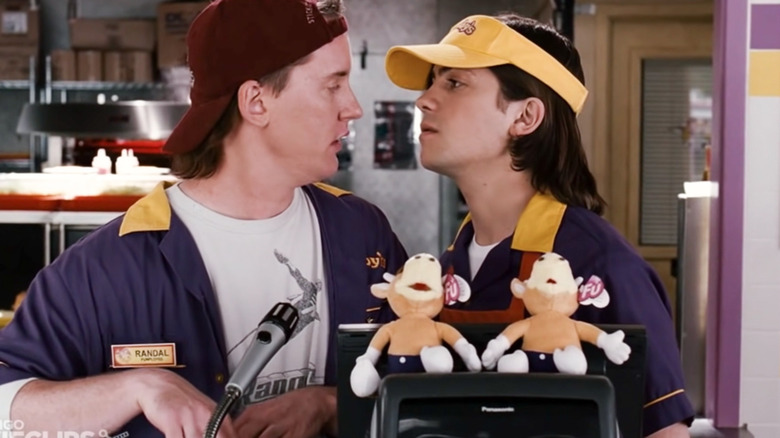We Finally Understand Why This Tune Plays In So Many Terrifying Movie Moments
Movies and television have long relied on musical cues to bring audiences along with a story. It's hard to imagine "Star Wars" without John Williams' iconic scoring, "Psycho" absent Bernard Hermann's tension-building melodies, or "Alien" sans Jerry Goldsmith's dramatic ebbs and swells. These three classic masterpieces of filmmaking, along with literally hundreds of other movies and television shows, at some point all use the same four-note sequence in D minor — F – E – F – D — to signify present or impending doom.
Wendy Carlos used it in the opening seconds of "The Shining," and Ira Newborn made it into a radio jingle for the first moments of "Ferris Bueller's Day Off." Williams used it behind Mufasa's death scene in "The Lion King" and as a punctuation mark for Luke Skywalker's (Mark Hamill) discovery of his murdered family in "Star Wars: Episode IV — A New Hope." It swells behind Ellen Ripley (Sigourney Weaver) as she signs off at the end of "Alien" as the sole survivor of the Nostromo. But just where did this strange and ominous melody come from, and why is it seemingly everywhere?
The Dies Irae originated with a 13th-century monk
The sequence is the first four notes from the "Dies Irae," or "The Day of Wrath," a 19-verse chant commonly attributed to Catholic monk Thomas of Celano for funeral masses in the 13th century. Both Wolfgang Amadeus Mozart and Giuseppe Verdi later used it as part of their "Requiem," and 17 of the chant's original stanzas are still used in the traditional Latin Catholic mass; one has since been dropped and another replaced.
Berklee College of Music professor Dr. Alex Ludwig keeps a running list of more than 200 uses of the "Dies Irae" in movies and television. He talked with WBUR in Boston about how the structure of the simple melody makes it a perfect fit for such moments. "Those first two notes are a half step apart, the closest interval we have," he said around the four-minute mark. "When you play those in close succession, we feel that dissonance."
Minor keys also bring us down, according to Ludwig, who goes on to say, "When we look at those four notes as a whole, the first note to the last note outlines a minor third ... we associate that, generally, with sadness, with darkness." WBUR's Peter O'Dowd thinks nearly a century of use has given the already ominous sequence even more weight in human minds. "We have been trained, without knowing it, to experience that as scary music because it pops up in pop culture so much," he said to Ludwig.
The next time it does — whether it's in "Close Encounters of the Third Kind" or "Clerks 2" — you'll know where it came from.

